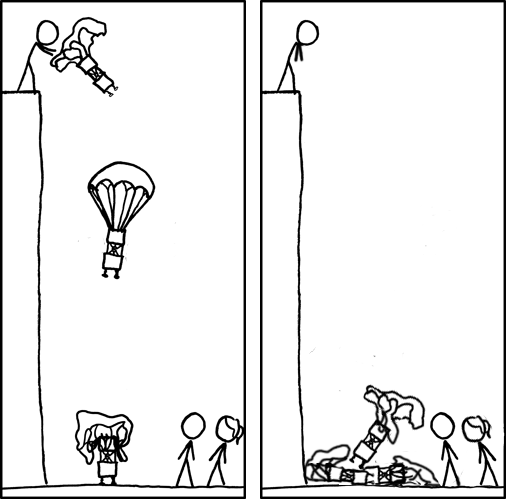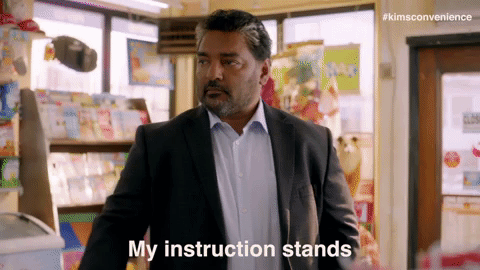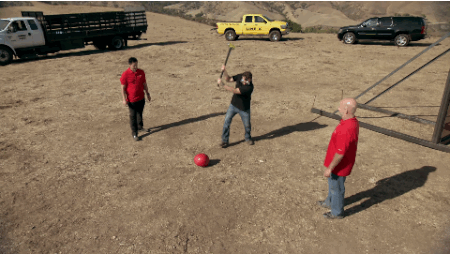Febin John James's Blog, page 11
January 2, 2018
GoingGalt Some banks have already started integrating smart contracts.
GoingGalt Some banks have already started integrating smart contracts.

cptbrkfst Thank You, I Corrected It.
cptbrkfst Thank You, I Corrected It.

January 1, 2018
A Beginner’s Guide to Blockchain

I don’t get why people find it difficult to understand Blockchain. I wonder why I myself didn’t. It was in 2013 I first heard about Bitcoin (yea, too late). I was poor to purchase one, so tried mining it. If I had been successful, you wouldn’t be reading this. Later, I thought of studying its underlying technology, the Blockchain. But, I was too busy with my startup (that didn’t work out either).
 Credits : xkcd
So what is this “Blockchain”?
Credits : xkcd
So what is this “Blockchain”?
There are two things. A block and a chain. At a very high level, it is just a chain of blocks. Since it’s inside computers, we can rule out the physical stuff. Here digital information is divided into blocks and linked together. For example consider the following blocks, each represent a country. Each of them contains the city names of the respective country.

Wait, there is something more. Each of these blocks has something called a hash. Hash is a set of alphabets and numbers like “1hi515AHA5H” ( it’s long actually). Hash is derived from the information contained in the block. The block of U.S.A has cities New York, Los Angeles, and Chicago. So the hash would be something like “NYLAC” (Technically that’s not the case, but you get the idea).

Every successive block will contain the previous block’s hash. This is what binds them together (The force). If someone tampers the first block to add the city Boston. The new hash becomes “NYLACB”. However, the succeeding block of India has already stored the hash as “NYLAC”. This mismatch will break the chain. So the purpose of hash is to make sure no one tampers it.
What if someone changes the contents of a block and update the hash of successive blocks? This is possible but there is one thing I didn’t tell you. The data of the blockchain doesn’t lie in one computer. It is replicated in the computers of every user in the network. If you join a blockchain network, your computer will download these blocks. If someone tampers his version, the network will consider what majority say is correct.
One more thing, in a Blockchain network, not only data but the program is also replicated. Computers collectively execute the program. Most internet apps are centralised. Consider Facebook, its data and program lies on its servers. Your computer requests information from Facebook’s server on a need to know basis. In case of blockchain, there is no central thing. It relies on its user’s computer to host its program. Yes, this means if every computer in the blockchain network switches off, it’s dead.
Public Blockchains Credits : xkcd
Credits : xkcdDoes this mean Blockchain is formed by a group of people who keeps their computers running for goodwill? What is the use of these tamper-proof blocks?
Blockchain networks have one or more functionalities. Bitcoin is a digital currency and a payment system. Its tamper-proof blocks hold ledger of all transactions. The people who sacrifice their computers are called miners. They get rewarded in bitcoins .
Ethereum has an additional functionality. It can host your code. Developing a blockchain from scratch and building your own community would be very difficult (Remember people has to sacrifice their computers for you?) . Ethereum takes care of the heavy lifting. You need to pay a fee depending on the computational costs.
Blockchain apps don’t have to be just payments systems or cryptocurrencies. It could be anything, like a social network, a learning platform like LiveEdu, etc.
Private Blockchains Credits : xkcd
Credits : xkcdBitcoin, Ethereum, etc are examples of the public blockchain. Anyone can be a part of it. What if we want to make a private blockchain network? Why would someone need a private blockchain for? Have a look at these stories.
Mark and Sara
Mark hasn’t paid his rent for five months. When Sara questions he promise to pay later. She is helpless. She can’t afford a lawyer. Courts take eight months to almost a year to enforce action. The only option is to persuade Mark.
Joe’s business
Joe is a businessman. He does business with different corporates on a frequent basis. A few months ago he signed a contract with a retailer. Though the conditions of the contract were met. The retailer refused to pay. These people take advantage of the legal system and persuade Joe to settle for less pay. Joe had such experiences before. In some cases, he went to court. The time and money he spent there cost him his profits.
How do we help Sara and Joe?
Have we solved this problem elsewhere? In Sara’s case, we need to make Mark pay the rent every month. A time-based trigger. Your calendar app uses such trigger to give you notifications of predefined events.
In Joe’s case, once terms of the agreement is met the party needs to pay. It’s a condition based trigger. Consider the last time you purchased an ebook from Amazon. Amazon will only deliver it once the payment is confirmed.
The point is computer programs execute such instructions consistently. It did when you clicked on this article, scrolled down, etc . In order to help Sara, we need to convert the agreements of the contract into code.
Pseudo code of the smart contract between Sara and Mark
If today’s date is 30th and rent is not paid thenTransfer $500 from Mark’s account to Sara’s accountBut where do we deploy this code? It should be deployed on computers of all parties involved. Sara’s and Mark’s bank will be part of a private Blockchain network. Joe and Sara will sign a coded contract(a.k.a smart contract). Then it’s deployed on the network. Both Mark’s and Sara’s bank will have a copy. On 30th of every month when the clock ticks 12.00. The agreed amount gets transferred from Mark’s account to Sara’s account. Joe started using smart contracts to enforce his clients to pay the agreed amount.
Sara is happy because she doesn’t have to trust Mark’s consent to transfer rent. Joe’s glad because he doesn’t have to go to a court for justice. Instead, he can spend those efforts to grow his business.
Private blockchain will be restricted to the parties involved in the business. Joe won’t be a part of the Sara’s and Mark’s Blockchain network.
The Way Ahead Credits : xkcd
Credits : xkcdNow that you have some idea, you should take this course on edX(It’s free). It will teach you to build apps on Blockchain.
Follow HackerNoon and me ( Febin John James ) for more stories. I am writing a book about Blockchain. If you wish to get the pre-release version sign up here . I also recommend one book with every story I write. Because reading is invaluable. (Find the benefits of reading here ). For this story, it’s Blockchain Revolution: How the Technology Behind Bitcoin Is Changing Money, Business, and the World.
If you want to own a bitcoin wallet I recommend Coinbase . I can respond to your bitcoin/blockchain queries via email. Let us talk .

A Beginner’s Guide to Blockchain was originally published in Hacker Noon on Medium, where people are continuing the conversation by highlighting and responding to this story.
December 29, 2017
How to Profit from Bitcoin Arbitrage

John is a merchant. He was roaming around his town. He notices in one part of the town the price for an orange is $1.70. In his part of the town, he could buy the same for $1. He decided to take advantage of this price difference. He bought ten oranges from his area and sold them on the other. He made $7 in profit ($0.70*10 = $7).
This is the same case with bitcoin exchanges. In some exchanges, you find bitcoin cheaper. This happens because cryptocurrency market is new and inefficient.
You can profit by buying bitcoin for cheap in one exchange and selling it on the other for a higher price. This is true with other cryptocurrencies also.
How do I track the price differences?Tracking these price manually is difficult. You can write a program to track it for you. Thankfully, while surfing through medium, I found a solution to track these on spreadsheets(Thank you, John Young). You can start tracking by making a copy of this spreadsheet. Here is a screenshot of the live spreadsheet.
 Credits : SpreadstreetHow do I use this?
Credits : SpreadstreetHow do I use this?It’s simple. Make a copy of John’s worksheet (Simple Cryptocurrency Arbitrage Spreadsheet). Install this Add-in on your chrome browser. Finally, you need to activate the add-in.
On the tool bar click on Add-ons -> Spreadstreet -> Help -> View in store -> Manage -> Make sure “Use in worksheet” is checkedThat’s it. Make sure you are on the summary tab of the worksheet. You can start tracking. If you face issues, reload the sheet. You can read the post written by John here.
No they don’t give access to private keys.
No they don’t give access to private keys. A lot of my friends (non developers) find Coinbase easier to use. Probably I am biased.

How Blockchain Will Help You Save on Lawyer’s Fees
 Mark and Sara
Mark and SaraMark hasn’t paid his rent for five months. When Sara questions he promise to pay later. She is helpless. She can’t afford a lawyer. Courts take eight months to almost a year to enforce action. The only option is to persuade Mark.
Joe’s businessJoe is a businessman. He does business with different corporates on a frequent basis. A few months ago he signed a contract with a retailer. Though the conditions of the contract were met. The retailer refused to pay. These people take advantage of the legal system and persuade Joe to settle for less pay. Joe had such experiences before. In some cases, he went to court. The time and money he spent there cost him his profits.
How do we help Sara and Joe?Have we solved this problem elsewhere? In Sara’s case, we need to make Mark pay the rent every month. A time-based trigger. Your calendar app uses such trigger to give you notifications of predefined events.
In Joe’s case, once terms of the agreement is met the party needs to pay. It’s a condition based trigger. Consider the last time you purchased an ebook from Amazon. Amazon will only deliver it once the payment is confirmed.
The point is computer programs execute such instructions consistently. It did when you clicked on this article, scrolled down, etc . In order to help Sara, we need to convert the agreements of the contract into code.
Pseudo code of the smart contract between Sara and Mark
If today’s date is 30th and rent is not paid then Transfer $500 from Mark’s account to Sara’s accountBut where do we deploy this code? It should be deployed on computers of all parties involved. This can be achieved with Blockchain. In Blockchain the involved parties are interconnected to form a peer to peer network.
Sara’s and Mark’s bank will be part of a private Blockchain network. Joe and Sara will sign a coded contract(a.k.a smart contract). Then it’s deployed on the network. Both Mark’s and Sara’s bank will have a copy. On 30th of every month when the clock ticks 12.00. The agreed amount gets transferred from Mark’s account to Sara’s account. Joe started using smart contracts to enforce his clients to pay the agreed amount.
Sara is happy because she doesn’t have to trust Mark’s consent to transfer rent. Joe’s glad because he doesn’t have to go to a court for justice. Instead, he can spend those efforts to grow his business.
Follow HackerNoon and me ( Febin John James ) for more stories. I am writing a book about Blockchain. If you wish to get the pre-release version sign up here . I also recommend one book with every story I write. Because reading is invaluable. (Find the benefits of reading here ). For this story, it’s Thinking in Systems: A Primer by Donella H. Meadows.
If you want to own a bitcoin wallet I recommend Coinbase . I can respond to your bitcoin/blockchain queries via email. Let us talk .

How Blockchain Will Help You Save on Lawyer’s Fees was originally published in Hacker Noon on Medium, where people are continuing the conversation by highlighting and responding to this story.
December 28, 2017
How You Could Have Invented Bitcoin for Yourself

I want you to feel that you could have invented Bitcoin for yourself. This story is about the thought process that leads to the invention of Bitcoin.
Let us go back in time. It’s 2008.
Mark owns a small business. Yesterday, his friend notified him his cheque bounced. Mark has no clue why this happened. He rushes to the bank. His account got wiped out. Last month he used a credit card to make an online purchase. The website got hacked and credit card numbers of the customers were compromised.
Natalie is a data scientist. She works at a retailer. She is forced to build an algorithm that studies purchase behaviours of people. It is then used to make their profile. Hope you know the story of How Target Figured out a Teen Girl Was Pregnant Before Her Father Did. Later a newsletter is sent which includes products that are likely to be purchased by the customer. Natalie feels guilty. She believes it is an invasion of customer’s privacy (So did Edward Snowden, that’s another story).
Joe is a refugee who somehow managed to escape his country. His wife is still stuck there. She has no source of income. He transfers $200 to his wife. The commission for the transfer is $20. In a year he loses around $240. To receive the money. Joe’s wife has to identify herself in person. In her country going out is a huge risk. It takes three days for the transfer to complete.
Imagine you are a programmer who loves solving problems. Joe, Mark and Natalie are your buddies. You are inspired to invent something that can benefit the entire world.
The first step is to define the problem.
In Mark’s situation, it was poor security that cost him his lifetimes earnings. In Joe’s case, his wife has to risk her life and the cash transfer service takes a hefty commission. For Natalie, she feels customer’s privacy should be respected. We are totally dependent on third parties like banks, retailers, etc. We have no alternative. Third parties take advantage of this situation.
“Third parties are ineffective yet we are forced to trust them.”
Your challenge now is to replace third parties. The features which third parties fail to offer becomes your value proposition.
Your system needs these features
User PrivacyInexpensiveSecureFastThere is a problem with existing currency. If you want to transact in U.S dollars it needs to go through a bank. That’s again a third party. What do you do?
Build a new currencyYes, that’s right. You have to invent a new currency. The only way to eliminate third parties. You need to help people create coin wallets. To respect user’s privacy you have to make them anonymous. You don’t collect information like name, email, etc. Instead, the user gets a randomly generated username and password. Example: If someone registers he/she will receive a username like “1248ACEGIKMbdfhjl” and a long password. Yes, this implies if a user forgets his password no one can help.
SecurityHow will you enable coin transfer between wallets? Simple, you just have to update the ledger. How do you make sure only the owner of the wallet can spend his/her coins? You remember the lessons of cryptography. About digital signatures, public key, private key, etc. You incorporate it into your system (Your currency now becomes a cryptocurrency).
DecentralisationNow even if you build a system with new currency where will you host it? You can host it on a server. Banks do the same. The concern is they have a central point of attack. Another concern is the costs of maintaining it. The important issue is you become a third party yourself.
You have to build a system that maintains itself and has no central point of attack. You scratch your head. Sleepover it. When you open your laptop the next day, you see a notification.The uTorrent app says “Download Completed”. That’s when you think. Oh! the solution was right here.
Torrents uses peer to peer networks to achieve decentralisation. It has no central point of attack and it is self-maintained.
Game TheoryTo build a peer to peer network you need peers. You need people running your code 24/7. Now, why would anyone do that? Unless you have an incentive. Well, you are making a new currency why not give some. But this must be carefully designed. If you give away a lot, then your currency won’t have value. So you incorporate principles of game theory into the system. That will incentivise people who run your code(a.k.a miners).
Spreading the wordYou write a paper about your idea and share it to among your network. Your friends understand it’s potential and ask you to give an executable. You make the first prototype and share it with your friends. They start mining.
Slowly this spread to your friends of friends. Some did for fun, some because they can brag among people who are rich in the MMORPG world.
You have solved Mark’s problem by using cryptography. The system is mathematically secure. Joe doesn’t have to pay a hefty commission and his wife can receive the money in minutes staying home. Natalie is happy because the system will never know who users are. As more people realised it’s potential. It’s demand increased. So did the price of your coin.
Congrats, You have invented Bitcoin . Kudos to you.
Follow HackerNoon and me ( Febin John James ) for more stories. I am writing a book about Blockchain. If you wish to get the pre-release version sign up here . I also recommend one book with every story I write. Because reading is invaluable. (Find the benefits of reading here ). For this story, it’s Thinking in Systems: A Primer by Donella H. Meadows.
If you want to own a bitcoin wallet I recommend Coinbase . I can respond to your bitcoin/blockchain queries via email. Let us talk .

How You Could Have Invented Bitcoin for Yourself was originally published in Hacker Noon on Medium, where people are continuing the conversation by highlighting and responding to this story.
December 25, 2017
If Blockchain Was a Person
This story will help you understand Blockchain without getting into the technical aspects.
Imagine a wise man at age 52. His name is William Blockhead.
 He goes by the book
He goes by the book
William is not interested in material wealth. His happiness is following rules. It is impossible to persuade him. He makes logical decisions based on written rules.
He is the ultimate decision maker
He doesn’t answer to anyone. No one can fire him. His ruling is ultimate.
He is unstoppable
Not only he makes logical decisions. He won’t stop until he sees them implemented.
He is indestructible
He is indestructible. He has wolverine-like healing features. Even if you hurt him, he has a biological system that heals him in no time.
He is quick
Even if you bombard him with tasks. He completes it in the given time.
His charges are nominal
In spite of his strong qualities. You don’t have to pay a hefty price.
He has nothing to hide
If you have suspicions about his decisions. You can ask for records. He would be happy to provide you.
Imagine you are in a dispute with your employer who is not willing to pay as agreed. You go to a court, hire a lawyer and fight. Think of the price you have to pay and the time you have to wait. Sometimes this cost might be more than what your payment was. So chances are you can’t even afford the fight.
But if it goes through William Blockhead. You will have the money in your account the moment your work is accomplished.
Now it is impossible for any human to possess these qualities. Yet, it is programmable. The Blockchain is such a program which has these features. Millions of computers around the world collaborate to execute it.
I am writing a book about Blockchain. If you wish to get the pre-release version sign up here . You can suggest topics you would like covered. I also recommend one book with every story I write. Since reading is invaluable. For this story, it’s Blockchain Revolution by Tapscott brothers . Thank you for reading. I can respond to your blockchain queries via email. Let us talk .

If Blockchain Was a Person was originally published in Hacker Noon on Medium, where people are continuing the conversation by highlighting and responding to this story.
December 15, 2017
Alice has an Idea

“It’s never going to happen” Alice sighed.
Bob confronted her “You give up too soon!”. Alice had played by the rules all her life. She strived for A’s in her school. An excellent student, an obedient daughter, and a sweet friend. Yet, she felt something was missing, especially when she was around Bob.
Bob had a tough time at school. His aim was to get done with it. His interest lies in ideas, and books. He often had no sense of his surrounding. Lost in his world. He hardly cared for what he portrayed in front of others. Yet, he was conscious when he was around Alice.
Alice has an idea. A platform that incentives people to produce and share renewable energy. Though this already happens through tradable renewable energy certificates, the system lack transparency. It involves intermediaries who help in generating, verifying and trading certificates. This system increases transaction costs and even leave room for fraud. The process is also time-consuming since the producer gets paid only after 60 days.
“ This seems to the problem bitcoin is solving..” Bob said.
“Bitcoin ?” she asked.
“Yes, Bitcoin. It is a digital currency. It works with no intermediaries instead trusts the people in the system.. I can send bitcoin to our friend Peter who stays in Egypt within minutes for a low transaction fee. The traditional money transfer systems are costly and take days to transfer.” he explained.
“I find it difficult to comprehend. Trusting the people? Can’t they cheat?” she asked.
“Consider you, Peter and me. We form an agreement with each other to use a new digital currency called Batcoin. To start off, each of us gets 50 Batcoins. We can trade them for physical goods or services from each other. When a transaction occurs, we announce it to each other, and everyone records it in their ledger book. If I try to change my ledger book, then it would create inconsistencies. The system will support what majority says is correct. As our community grows and more people get added to the system. The demand for Batcoin increases and hence its value. This is what happened with Bitcoin.” he clarified.
“But, what if the majority in the system tries fraud ?” she questioned.
“Theoretically, it is possible to hack the network through a majority attack. The likelihood of that happening is very low. Because of the built-in security features, it requires huge computational power. Bitcoin is open source, experts around the world contribute to improved security .” he said.
“Built-in security features?” she asked.
“Once you send bitcoin to someone. It gets broadcasted throughout the network. The system groups such broadcasted transactions and writes it into a block. This new block is only added to the system after it gets mined. Mining is like a trial and error process. Imagine you are trying to log in to your brother’s laptop. He has given you one clue; it is a movie’s name. You begin the trial and error process by trying different movie names. Similarly, for every block, we need to find a password like value called nonce. This value is dependent on the data in the block. The system rewards the first person to find the nonce with bitcoins. These get minted out of thin air. Once a miner finds nonce, other people in the network can confirm it easily. Like once you find the password, your friend can log in to the system and confirm the password you mined. Newly mined blocks get linked to the previous blocks. These series of blocks is what makes Blockchain . We can trace any point in the chain back to the very initial block. Now if you want to tamper a block you also need to tamper every other block succeeding it. This process requires you to find nonce again for every block which requires a lot of computing power.” he explained.
“So that’s how new coins come into the system. I assume computers which run the bitcoin program does the mining and not people themselves?” she stated.
“You are correct.” he said.
“Wait, what about privacy? Because every transaction gets shared with everyone,” she asked.
“When you register to bitcoin, you don’t give away your personal information such as email or name. Instead, you receive a randomly generated username like ‘1933phfhK3DXvqCn32k2buXY8a’ and a long password.. The username is called public key which becomes your identity. The long password is called private key. There is no way anyone can find out your information from the public key.. You can use the private key to check your balance, send money, etc. If you lose your private key, there is no way to retrieve it back.” he clarified.
“Interesting, but can I convert Bitcoin to USD?” she asked.
“Of Course you can. You sell it at a bitcoin exchange.. As of now (21st November 2017) 1 BTC is worth 7991.49 USD” he said.
“Wow! Who invented this?” she questioned.
“No one knows who invented bitcoin. The inventor used a pseudo name ‘Satoshi Namokato’ on his bitcoin paper published in 2009.” he said.
“What? How can we then trust this system ?” she asked.
“Though he created it, he doesn’t own the system. No one does. The community controls it. The power is with people themselves.” he said.
“Hmmm, but how does bitcoin help us?” she asked.
To be continued …
I hope you enjoyed it. More chapters will be published soon. Follow Hackernoon and me (Febin John James) so that you won’t miss them. You can also contribute to the research and get exclusive stories by filling this form. Perks also include receiving a digital copy of my book on blockchain prior to it’s release ;).

Alice has an Idea was originally published in Hacker Noon on Medium, where people are continuing the conversation by highlighting and responding to this story.
Chapter 1: Alice has an Idea | Blockchain Explained In Stories

“It’s never going to happen” Alice sighed.
Bob confronted her “You give up too soon!”. Alice had played by the rules all her life. She strived for A’s in her school. An excellent student, an obedient daughter, and a sweet friend. Yet, she felt something was missing, especially when she was around Bob.
Bob had a tough time at school. His aim was to get done with it. His interest lies in ideas, and books. He often had no sense of his surrounding. Lost in his world. He hardly cared for what he portrayed in front of others. Yet, he was conscious when he was around Alice.
Alice has an idea. A platform that incentives people to produce and share renewable energy. Though this already happens through tradable renewable energy certificates, the system lack transparency. It involves intermediaries who help in generating, verifying and trading certificates. This system increases transaction costs and even leave room for fraud. The process is also time-consuming since the producer gets paid only after 60 days.
“ This seems to the problem bitcoin is solving..” Bob said.
“Bitcoin ?” she asked.
“Yes, Bitcoin. It is a digital currency. It works with no intermediaries instead trusts the people in the system.. I can send bitcoin to our friend Peter who stays in Egypt within minutes for a low transaction fee. The traditional money transfer systems are costly and take days to transfer.” he explained.
“I find it difficult to comprehend. Trusting the people? Can’t they cheat?” she asked.
“Consider you, Peter and me. We form an agreement with each other to use a new digital currency called Batcoin. To start off, each of us gets 50 Batcoins. We can trade them for physical goods or services from each other. When a transaction occurs, we announce it to each other, and everyone records it in their ledger book. If I try to change my ledger book, then it would create inconsistencies. The system will support what majority says is correct. As our community grows and more people get added to the system. The demand for Batcoin increases and hence its value. This is what happened with Bitcoin.” he clarified.
“But, what if the majority in the system tries fraud ?” she questioned.
“Theoretically, it is possible to hack the network through a majority attack. The likelihood of that happening is very low. Because of the built-in security features, it requires huge computational power. Bitcoin is open source, experts around the world contribute to improved security .” he said.
“Built-in security features?” she asked.
“Once you send bitcoin to someone. It gets broadcasted throughout the network. The system groups such broadcasted transactions and writes it into a block. This new block is only added to the system after it gets mined. Mining is like a trial and error process. Imagine you are trying to log in to your brother’s laptop. He has given you one clue; it is a movie’s name. You begin the trial and error process by trying different movie names. Similarly, for every block, we need to find a password like value called nonce. This value is dependent on the data in the block. The system rewards the first person to find the nonce with bitcoins. These get minted out of thin air. Once a miner finds nonce, other people in the network can confirm it easily. Like once you find the password, your friend can log in to the system and confirm the password you mined. Newly mined blocks get linked to the previous blocks. These series of blocks is what makes Blockchain . We can trace any point in the chain back to the very initial block. Now if you want to tamper a block you also need to tamper every other block succeeding it. This process requires you to find nonce again for every block which requires a lot of computing power.” he explained.
“So that’s how new coins come into the system. I assume computers which run the bitcoin program does the mining and not people themselves?” she stated.
“You are correct.” he said.
“Wait, what about privacy? Because every transaction gets shared with everyone,” she asked.
“When you register to bitcoin, you don’t give away your personal information such as email or name. Instead, you receive a randomly generated username like ‘1933phfhK3DXvqCn32k2buXY8a’ and a long password.. The username is called public key which becomes your identity. The long password is called private key. There is no way anyone can find out your information from the public key.. You can use the private key to check your balance, send money, etc. If you lose your private key, there is no way to retrieve it back.” he clarified.
“Interesting, but can I convert Bitcoin to USD?” she asked.
“Of Course you can. You sell it at a bitcoin exchange.. As of now (21st November 2017) 1 BTC is worth 7991.49 USD” he said.
“Wow! Who invented this?” she questioned.
“No one knows who invented bitcoin. The inventor used a pseudo name ‘Satoshi Namokato’ on his bitcoin paper published in 2009.” he said.
“What? How can we then trust this system ?” she asked.
“Though he created it, he doesn’t own the system. No one does. The community controls it. The power is with people themselves.” he said.
“Hmmm, but how does bitcoin help us?” she asked.
To be continued …
I hope you enjoyed it. More chapters will be published soon. Follow Hackernoon and me (Febin John James) so that you won’t miss them. You can also contribute to the research and get exclusive stories by filling this form. Perks also include receiving a digital copy of my book on blockchain prior to it’s release ;).

Chapter 1: Alice has an Idea | Blockchain Explained In Stories was originally published in Hacker Noon on Medium, where people are continuing the conversation by highlighting and responding to this story.



